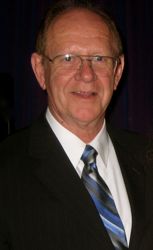• Kidmin—Entry Scenerios
From my vantage point, in getting to know many children’s ministry leaders, I concluded that there seem to be five typical ways or scenarios that persons use to come into the profession of Children’s Ministry. We like to call them KIdmin!
1. The Lay Volunteer (LV). This person begins volunteering in the children’s ministry, while their own children are young. With years of experience with children, the program and the church, this “insider” gets paid for part-time, then eventually become full-time as the program grows. They tend to reinforce the practical aspects of ministry and become a trusted insider with no formal academic work in children. They feel inadequate around trained clergy types. They seem to just slip into the “back door” of this profession, without even an application or resume. They need training, coaching and ministry leadership experience, but are responsive to any kind of help they can arrange, while their family is young.
2. The Credentialed Teacher (CT). This person is a trained public-school teacher who exchanges their experience in the classroom for a position as a church staff leader in children’s ministry. They tend to bring an educational model to children’s program, but seem to struggle with tension between the gift of teaching and the gift of evangelism. Can be perceived as a trusted outsider with some formal training. Many aspects of ministry leadership are quite new to them. Usually they are responsive to outside help and become open to learning from ministry specialists, who they perceive as “educationally sound.” This is their “litmus test” for good children’s ministry.
3. The person trained in Christian Education (CE). They are generalists who now specialize in children’s ministry. They tend to have a broader scope of curriculum, teaching methods, programming and teamwork. While their training is significant, they still need more concentration on formal training in children’s ministry, as the profession has broadened quite beyond the scope of CE programs from the fifties-seventies. They are eager for networking and specialized training opportunities that come to town. Long distance-learning models are appealing or learning by extension is appealing because “residency” programs are difficult with a family. They are open to coaching, if they perceive competency and expertise.
4. The Empty Nester (EN). Usually this is a woman who might have been either a working person or a full-time mother, whose children are now grown and out of the house. Her husband has a good full-time job, and she is a trusted “insider” who is now available. They can be a low-cost hire for some churches coming in under 30 hours, without benefits. They might have been involved with the ministry, but have no formal training in children’s ministry. Children’s Ministry is presented to them as a career-change opportunity. They tend to be an older insider, more available and do not demand a professional salary with benefits. They are responsive to networking, specialized training opportunities and mentoring (there are some exceptions).
5. The Vocationally Called (VC). This person begins with a calling upon their life early on. To establish a career path in children’s ministry they pursue as much experience, education and coaching as possible to build their resume or portfolio in children’s ministry for their life’s work. Children’s ministry is what their life is about, no matter what life experiences befall them. They are passionate about children’s ministry, and pursue life-long learning to become the best they can be. They might have undergraduate work in a related field, but these become the recent graduates of Master’s in Children’s Ministries, a new program since late eighties. They are most responsive to mentoring, especially during the first ten years.
Barney Kinard ©2010, All rights reserved. Do not reprint or publish without attribution.







Leave a Comment